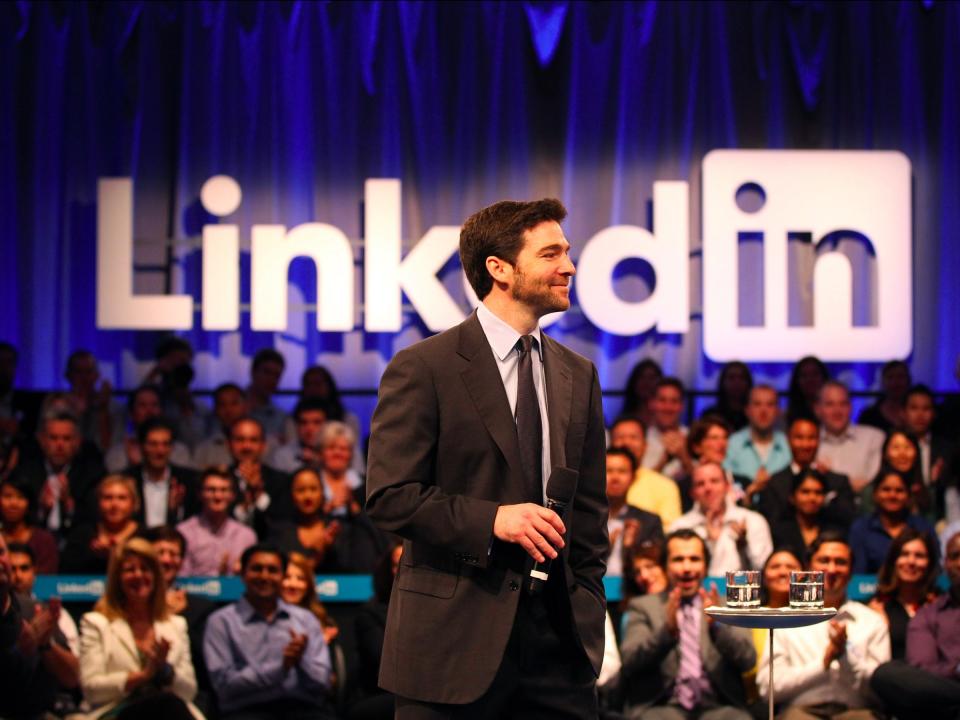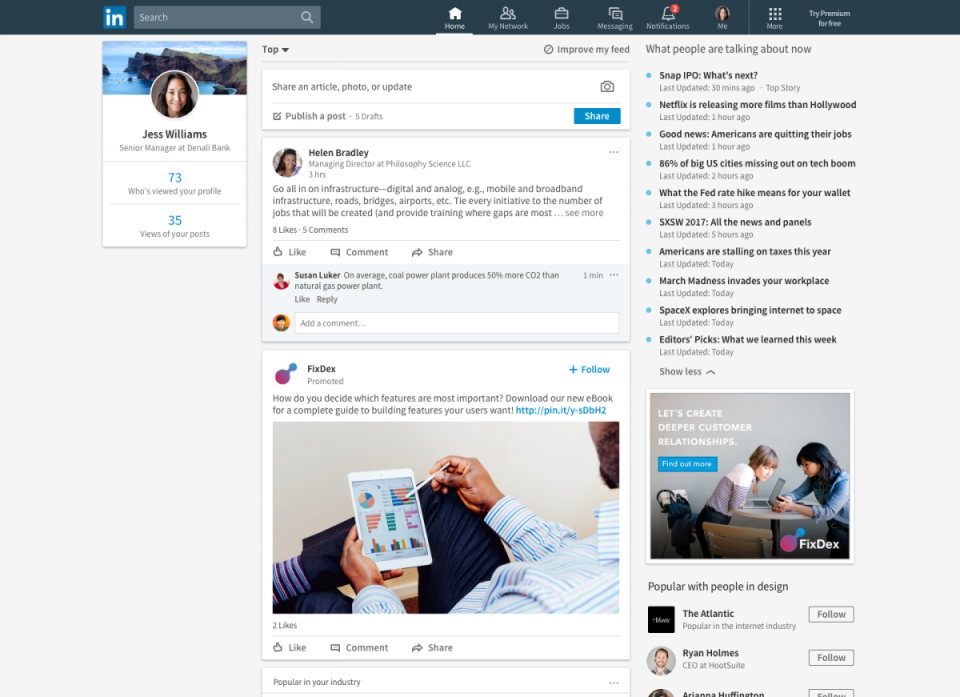LinkedIn is getting a Facebook-like feature

LinkedIn has a content problem, although not quite the content problem you might think.
The professional networking site, acquired by Microsoft (MSFT) last December for nearly $26 billion, sees a lot of distributed and original content come through, fueling a 40%-plus year-over-year increase in user engagement with its news feed. But until now, LinkedIn lacked a solution for organizing all that content in a way its 450 million users could quickly and conveniently digest.
On Wednesday, however, the site announced Trending Storylines, a new section for web and mobile that shows news and content it thinks you’ll find relevant and interesting.
For LinkedIn, it’s a smart move, albeit a late one, given Facebook’s (FB) own Trending section has been available to users for well over two years now. But while LinkedIn launched Trending Storylines much later, its version appears smarter and more useful.
In my own personal experience toggling between the two, I found the topics and news stories suggested by LinkedIn better catered to my interests and ultimately more useful. It also helps that Trending Storylines is available for mobile, as well, while Facebook’s Trending section remains a notable omission from the main Facebook mobile app.
“If you just want to quickly catch up and say, ‘What’s going on with the world that I need to know about?’ it’s a hard thing to do on LinkedIn right now,” acknowledged LinkedIn executive editor Dan Roth. (Disclosure: I worked with Roth over five years ago at Fortune Magazine.)
“This product that we’re launching is kind of a next step in LinkedIn’s evolution, which I think solves that issue,” he added. “Our goal is to make sure [our users are] given the chance to sound smarter, so they can walk into any meeting and know exactly what people might be talking about.”
On the desktop, LinkedIn users will notice a new section that appears on the upper right-hand side labeled “What people are talking about right now”:

On the mobile app, users will discover the section under a new “Trending” tab:

How these stories are selected for each user boils down to a combination of human curation — a news team led by Roth — as well as a set of algorithms that take into account numerous factors, including your LinkedIn connections, the types of articles you click on, even how long you linger on a story.
Clicking on a particular story leads to a Trending Storyline that shows a main story up top — a story about Snap’s recent IPO, for example — followed by relevant stories shared or published by LinkedIn connections. Users can also filter through stories based on different filters like “Latest” (latest stories about the topic) and “In Your Network” (relevant stories shared by your network), and share an update of their own about the topic inside the Trending Storyline itself.

How Trending Storylines performs once LinkedIn rolls out the feature to all of its users remains to be seen. However, it’s a logical next step for the professional network, which aims to keep its users engaged on a daily and weekly basis.
Those users don’t just use LinkedIn for for finding jobs, but are also increasingly using it to consume the growing firehose of content now flowing throughout thanks to news distribution and content efforts like LinkedIn Influencers, who publish 100,000-plus stories there each week.
—
JP Mangalindan is a senior correspondent for Yahoo Finance covering the intersection of tech and business. Follow him on Twitter or Facebook.
More from JP:
Silicon Valley’s favorite sneaker has a wear-and-tear problem
How ‘video understanding’ could transform Facebook
3 major problems with Trump’s protectionist attitude toward China
Fry’s Electronics: How this tech retailer has survived the fall of brick-and-mortar
Why ‘experience can hurt tech workers in Silicon Valley
Why AI could be Silicon Valley’s latest ‘micro bubble’
Surprise and disgust: What 6 Silicon Valley CEOs said about Trump’s ban
